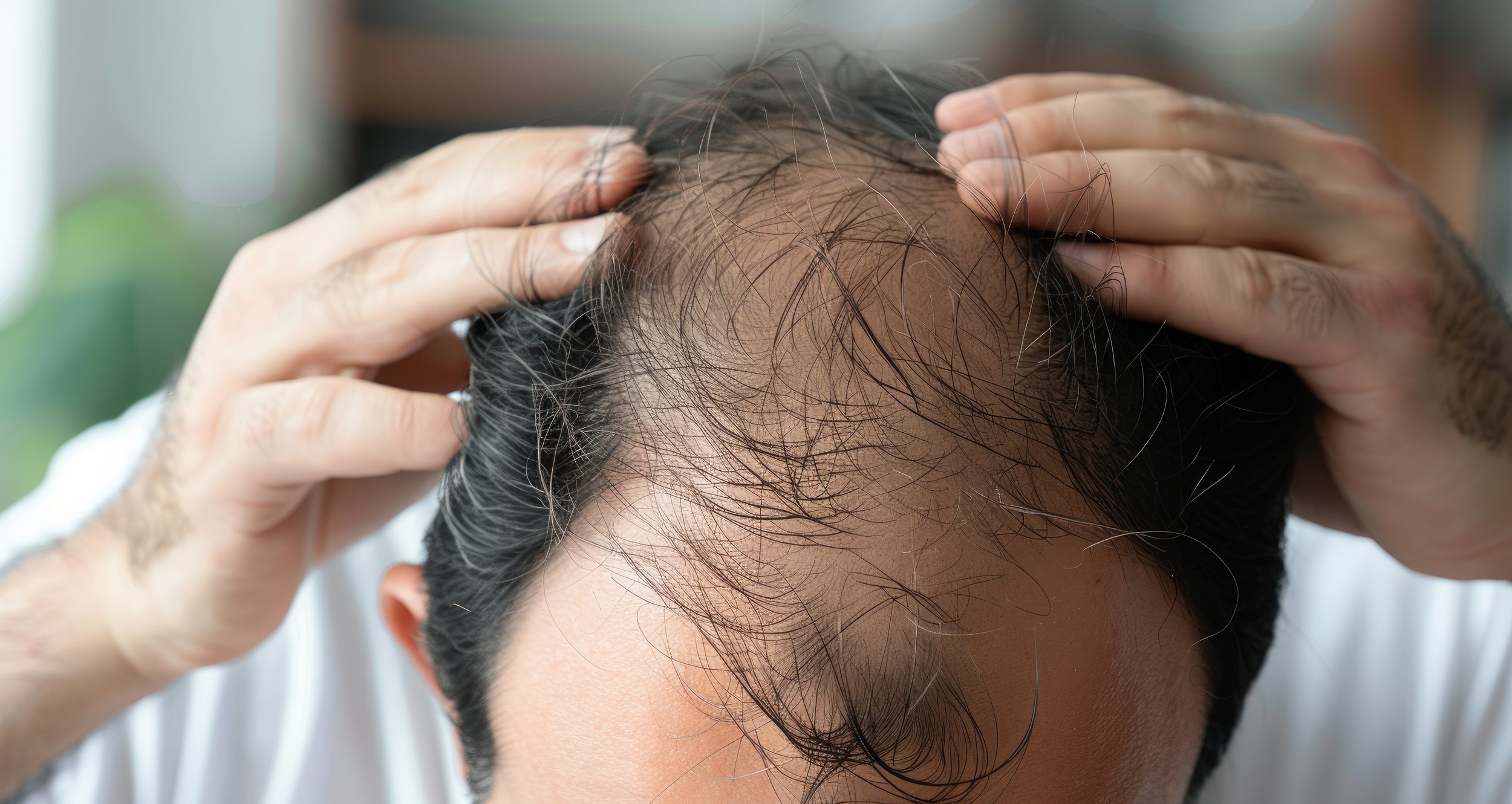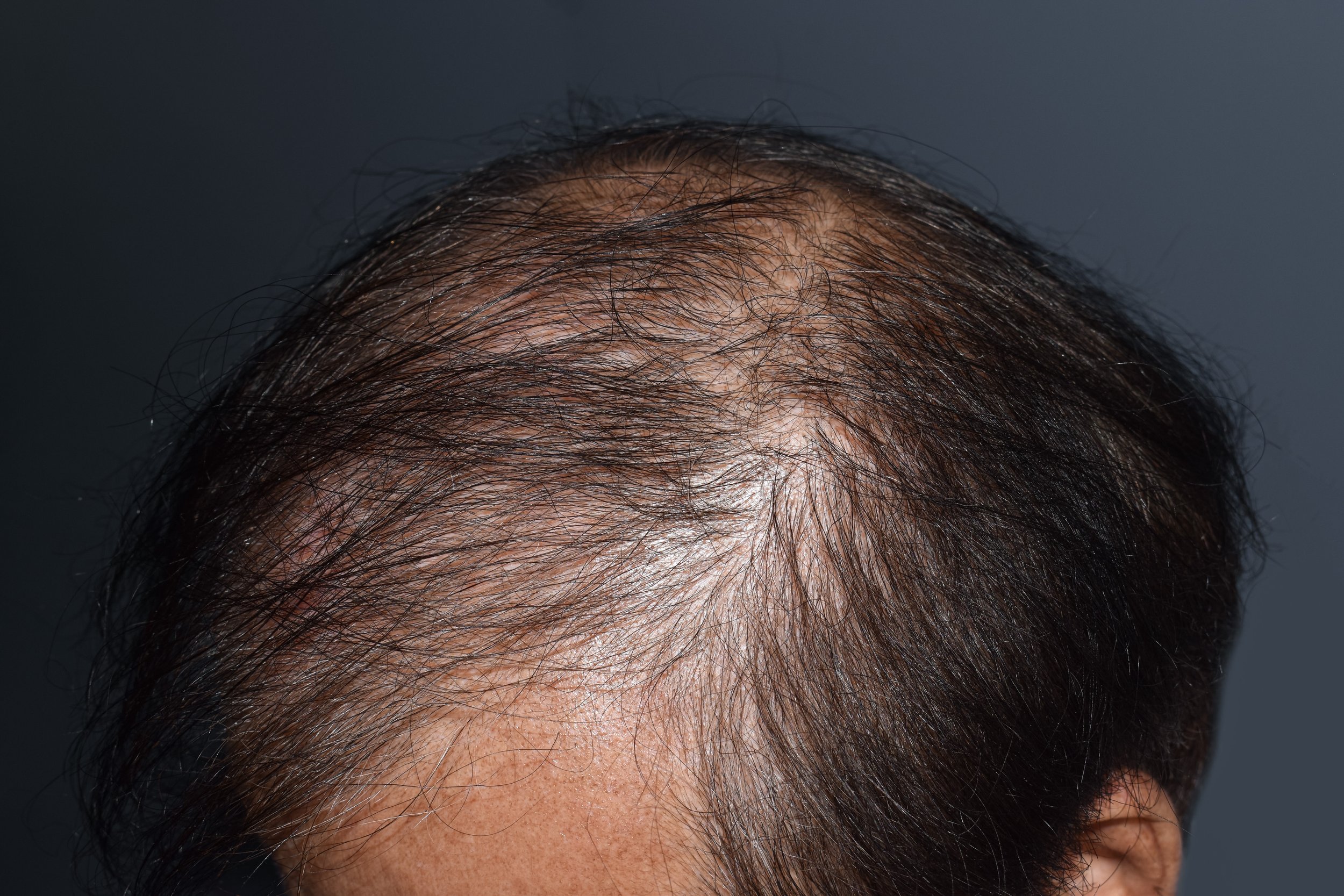
Male Pattern Baldness

What is male pattern baldness?
Male pattern baldness (androgenetic alopecia) is the most common type of hair loss in men. According to the American Hair Loss Association, male pattern baldness is responsible for 95% of hair loss in men and 67% will experience some degree of noticeable hair loss by 35. It causes you to lose hair on your scalp, which doesn't grow back. In the overwhelming majority of cases, genetics are the cause.
Stages of male pattern baldness
Stage 1:
Little or unnoticeable recession of the hairline.
Stage 2:
Recession of the hairline on either side of the forehead (temples), creating an M-shape.
Stage 3:
Stage 3 is characterized by further recession of the hairline, which now visibly forms a pronounced M, U, or V shape.
Stage 4:
At this point, the hairline recession and thinning on the top of the head (crown) are more severe.
Stage 5:
The frontal hair loss and crown thinning start to connect, leaving just a sparse band of hair.
Stage 6:
This stage marks the merging of the balding areas from the front and crown, resulting in a significant horseshoe-shaped band of hair remaining on the sides and back of the scalp. The hair in this area is typically fine and less dense.
Stage 7:
The top of the head is entirely bald, and the hair around the sides is sparse and thin.

Who is most likely to experience male pattern baldness?
Studies suggest that Caucasian men are more likely to experience male pattern baldness. Conversely, Asian men, including those from East Asian, Southeast Asian, and Indigenous Polynesian populations, often exhibit lower rates of male pattern baldness, with the onset of hair loss also tending to occur at a later age. African American men fall somewhere in between these two extremes, with a moderate incidence of male pattern baldness.
What causes male pattern baldness?
Genetic factors are believed to play a substantial role. In addition, alopecia is likely related to increased androgen (hormone) activity.
How is male pattern baldness diagnosed?
Diagnosis usually relies on the hair loss pattern. A healthcare provider will inspect the scalp and hair, checking for inflammation or infection. Our providers may also order a blood test to check your thyroid function.
PRP for hair loss
Platelet-rich plasma involves drawing a small amount of the patient's blood, which is then processed to concentrate the platelets. These platelets are rich in growth factors that help repair and regenerate tissues.
The concentrated platelet-rich plasma is then injected into the scalp areas experiencing hair loss. The growth factors in the PRP can lead to thicker and healthier hair growth.
At MIMIT Health, our experienced healthcare professionals administer PRP therapy in a series of treatment sessions tailored to the individual needs of our patients. While results can vary, many of our patients notice a significant improvement in hair density and thickness following PRP treatment.
How to prevent male pattern baldness
Though genetic factors are beyond control, preserving hair health and potentially slowing hair loss progression can be achieved through adopting a healthy lifestyle, stress management, and steering clear of harsh hair treatments.
Psychological Impact
Male pattern baldness can have a significant impact on self-esteem and confidence. Seeking support and openly discussing concerns with a healthcare provider is crucial. Additionally, counseling or participation in support groups may be recommended to navigate through this challenge effectively.



